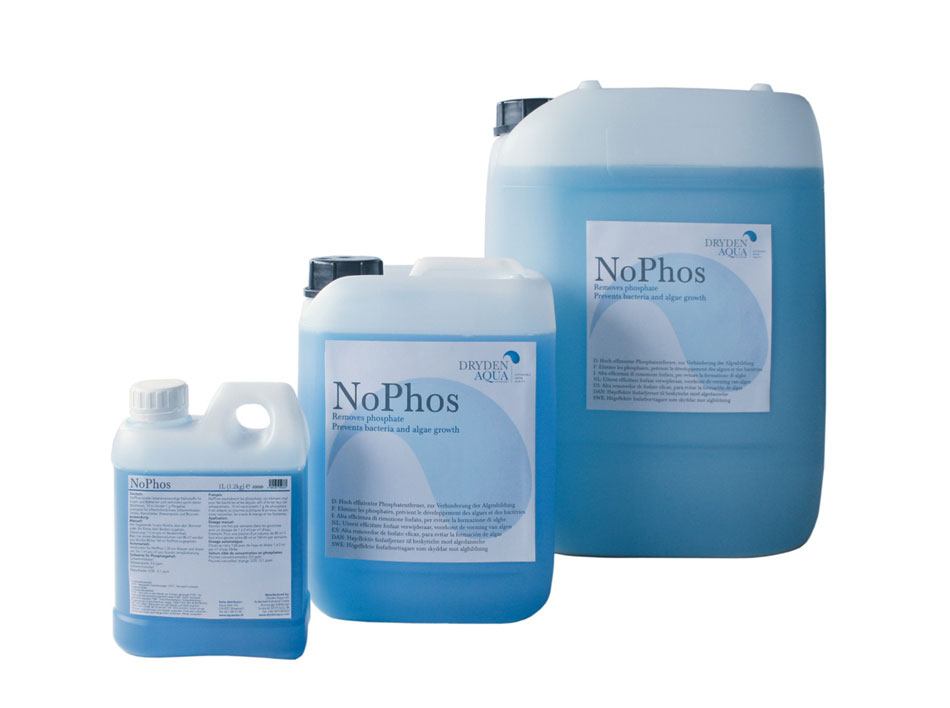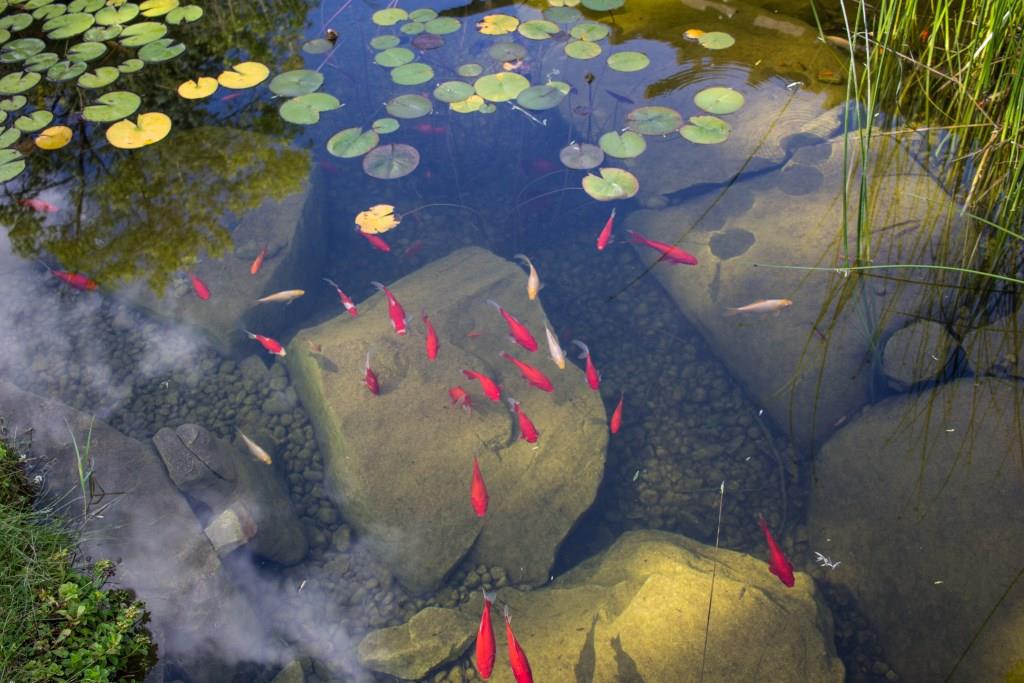NoPhos
Without Phosphate Algae Can’t Grow

What is NoPhos?
Unicellular algae and bacteria need phosphates to transport nutrients across their cell membranes. In the absence of phosphates they cannot metabolise any nutrients that are present in the water.
NoPhos removes phosphates that enter the system from make-up water supply, from animal feed and from wind blown debris. Phosphates are fertilisers and if controlled, algal and bacterial growth can be managed. If phosphates are removed they will starve and algae/bacteria are eliminated over a period of about six weeks.
NoPhos is a natural product that can be safely used in living systems. It is widely used in aquaria and mammal systems around the world including use for management of phosphates in living coral culture. Dryden Aqua’s knowledge as marine biologists ensures the purity and consistency of chemical content that determines its suitability for aquarium use.
NoPhos uses Lanthanum, a charged ion which reacts with phosphate to form an insoluble precipitate that is removed by AFM®, or it forms an inert deposit on the bottom of the pool that is easily removed.
Your benefits at a glance:
- Eliminates phosphates
Prevents algae and bacterial growth - Is a natural product
Can be used in marine mammal LSS as well as in fish and invertebrate systems. Non-toxic and guaranteed pure! - Is a coagulant
It improves the filtration performance of both AFM® and sand filters.

Phosphate target levels & analyses
- In mammal LSS the objective should be total elimination of phosphates.
- In biological systems phosphate levels should be controlled to between 0.05 and 0.1mg/l.
Phosphates can be analysed using a simple spectrophotometer with appropriate reagents. Analyses will measure only phosphates in solution and not those bound up in organic matter. The actual level of phosphates will therefore always be greater than measured levels and continuous low level dosage will normally be needed.

On our new download section
Webdesign by Bönzli + Feuz IT

